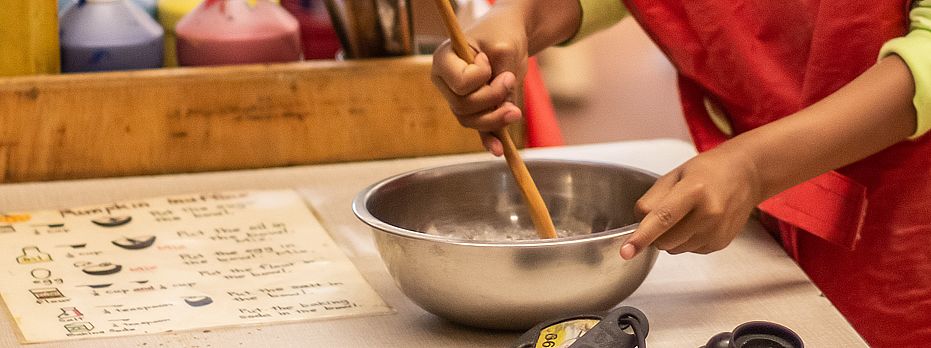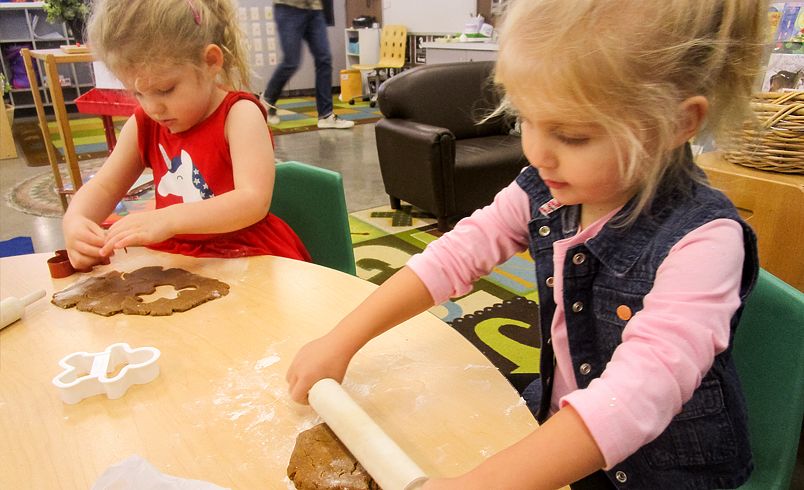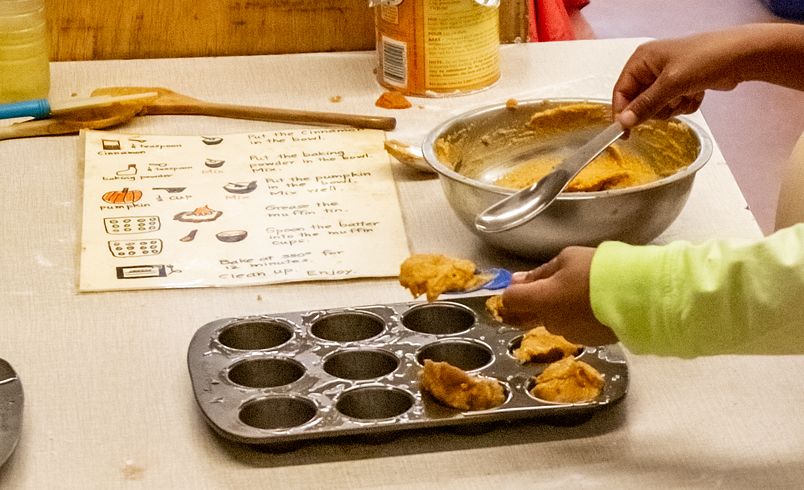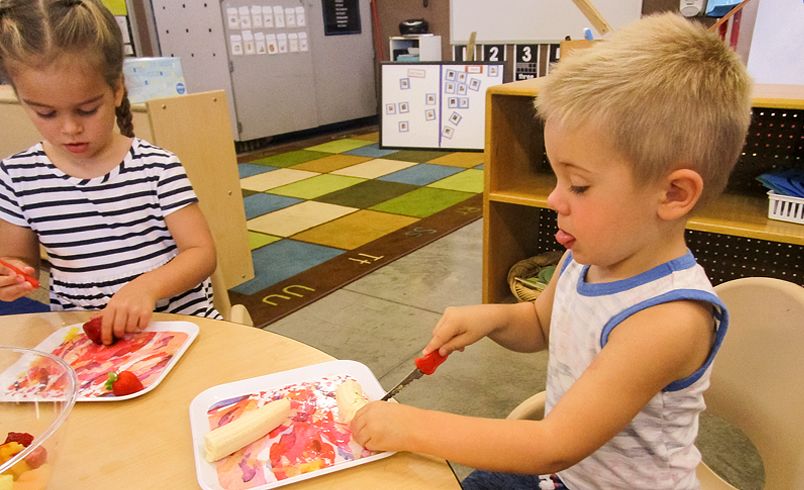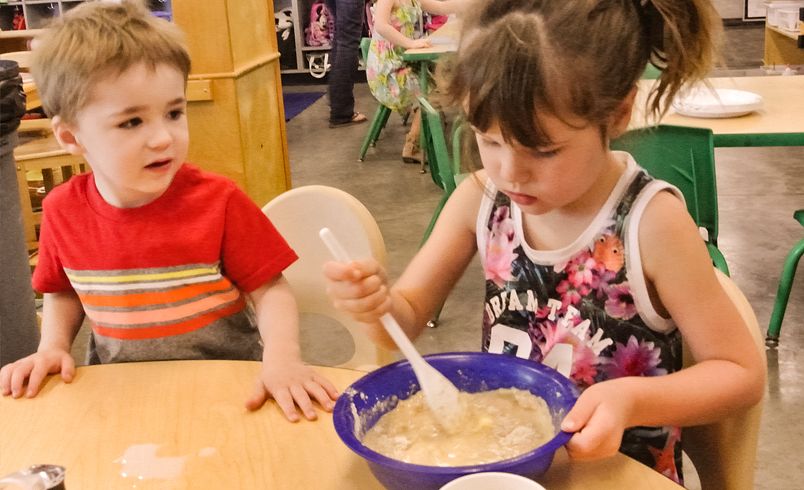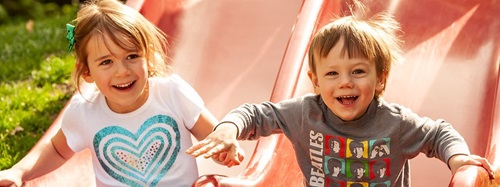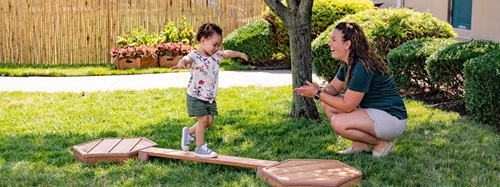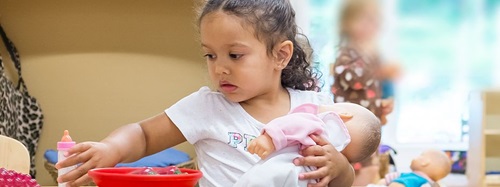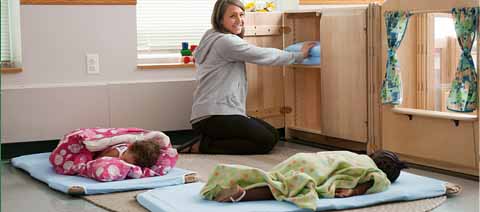Cooking in the Classroom
| March 2020Think about some of your earliest childhood memories. Chances are, many of those memories involve food. For me, some of my earliest memories include the smell of fresh cherry pie baking in my grandmother’s kitchen and having my grandmother tell me to go out to the garden and “pick a salad” for dinner. Food brings people together and provides opportunities for shared experiences. Recipes are handed down from generation to generation and so many family and holiday traditions include special foods.
Young children pretend to cook all the time. They “bake” mud pies using sand, dirt, and water and run a kitchen using play food, dishes, and utensils in the dramatic play area. “Play cooking” is a logical precursor to actual cooking. Young children like to imitate what the adults around them are doing. Cooking gives children real life opportunities to help plan, create, and serve the food that they are consuming.
Cooking is a universal necessity and an important life skill. Children who learn healthy eating and cooking habits at a young age are more likely to grow up to be adults with healthy eating and cooking habits.
As an early childhood educator, cooking is a regular part of my curriculum. It is easy to incorporate literacy, vocabulary development, math, science, and social studies when planning cooking activities for young children. For example, I always have the recipe printed for the children to read when we are cooking together. Recipes that are used in the classroom include both words and pictures to help the children identify the ingredients needed. When a picture is included next to the word, you turn a non-reader into a reader. Numbers are included so that children can determine how much of an ingredient is needed. Children begin to recognize the numerals and understand that the numeral stands for a quantity. After the cooking project is completed, we have the children recall the ingredients and the step by step directions that were followed. We write their recipe on the white board and then print it on card stock. Later, each child illustrates their recipe card to add another layer of literacy. At the end of the year we create a class cookbook with all the recipes we have made throughout the year.
In addition to reading and writing a recipe, there are many great books that can be paired with cooking activities. The Doorbell Rang by Pat Hutchins is a great opportunity to teach about sharing, fractions, and making cookies. If you Give a Moose a Muffin by Laura Numeroff lends itself beautifully to a muffin making activity. Little Red Hen Makes a Pizza by Phillemon Sturgess is a great twist on a classic tale which allows the opportunity not only for a literature study to compare and contrast different versions of similar stories—but also an opportunity to make pizza.
Words are fascinating and enticing to young children. Cooking provides a great opportunity to introduce new vocabulary to children and to show them how words can have multiple meanings. For example, when making bread, you need to knead the dough. It is generally not acceptable to pinch a person, but a pinch of salt is the perfect amount to add to most recipes. When playing a game, you might roll the dice. When making soup, you dice the vegetables. In the book Cook a Doodle Doo by Janet Stevens and Susan Stevens Crummel, Rooster is tired of eating the same old thing all the time. He finds a cookbook that belonged to his great-great-granny, The Little Red Hen. Rooster decides that he too can cook. With the help of his friends Iguana, Turtle, and Potbellied Pig, Rooster sets out to make strawberry shortcake. Along the way they discover many new words as well as new meanings to words they already know.
Fractions, measuring, sequencing, and counting are a few of the many math concepts that can be incorporated into cooking activities. A child can cut the stick of butter in half, or cut the banana into thirds. When measuring dry ingredients, you can use a half cup measure twice to make a full cup, or a quarter cup measure four times to make a cup. If you make a round pizza, would you rather share it evenly with four people (quarters) or three people (thirds)? Which scenario would give you more (or less) pizza?
Following the directions of a recipe requires sequencing skills on the part of the child. First, beat the butter and sugar until creamy. Then add the eggs and vanilla. Last, add the dry ingredients. Children can also learn patterning by making a yogurt-fruit parfait—bottom layer of yogurt, then a layer of granola, then a layer of fruit—and repeat.
Our young chefs are also learning some basic chemistry when cooking. How does bread rise? What happens when you mix yeast, a small amount of honey or sugar, and warm water? How does food change from solid to liquid, or from liquid to solid? What effect does temperature have on food? When cooking, children have opportunities to make predictions and observations.
When introducing young children to cooking, it’s best to start small. Use recipes that require few ingredients and simple steps. As children become more proficient, and adults become more comfortable with the process, add more complex recipes to your repertoire. Always try your recipes prior to sharing them with children. You want the children to experience the joy of discovery at the outcome. However, as a teacher, you don’t want any surprises.
Nutrition awareness is vital for children to grow up healthy. Children must be taught how to make healthy food choices and these healthy habits start at a young age. By including young children in the process of choosing, preparing, and serving healthy food, we are setting them up for a lifetime of healthy eating.
Perhaps it’s the enthusiasm of creating something themselves, but children are more likely to try a novel food if they have had a hand in the preparation of that food. Several years ago my preschool class was making zucchini muffins. One particular child was adamant that he was not going to eat anything made with zucchini. I assured the child that he would not be forced to eat anything, but that I really wanted his help to grate the zucchini, add the other ingredients, mix the batter, and scoop the batter into the muffin tins. Once the muffins were baked, the child reiterated that he would not eat zucchini. I again assured him that he did not have to eat the muffin, but I strongly encouraged him to just lick the muffin. In the end, that child ended up eating two zucchini muffins.
In my class we also enjoy learning and investigating where food comes from. We have a garden where we grow broccoli, snap peas, and other vegetables. The children love to pick the vegetables and eat them fresh from the ground. We discuss how climate affects different produce. We take field trips to local farms, dairies, grocery stores, bakeries and restaurants. On one field trip to a market, the children were shown an entire brussels sprout stalk. Each child was given one sprout to carry with them during the tour. When we returned to school, we cooked the brussels sprouts in garlic and olive oil. Seventeen out of 18 preschool aged children ate brussels sprouts for snack that day!
Cooking also affords the opportunity to integrate social studies content into the curriculum. Social studies is the study of human society, including history and geography. Food is an important element in all cultures. Children learn about different cultures through the foods people eat. In my early childhood class we have invited parents and grandparents to help us cook food from their homelands. One year a student from India wanted to make chicken briyani in class. With the help of his mother, all the children were introduced to some new and exciting flavors. Recently, a grandmother who was visiting from Australia joined our class to help the children make ANZAC (Australia New Zealand Army Corps) biscuits. After making the cookies, the grandmother read a story by Mem Fox, an Australian author.
Many of our traditions, communities, and heritage are connected to “comfort food”. From the farmer’s markets to a grandmother’s kitchen, we truly are what we eat.

